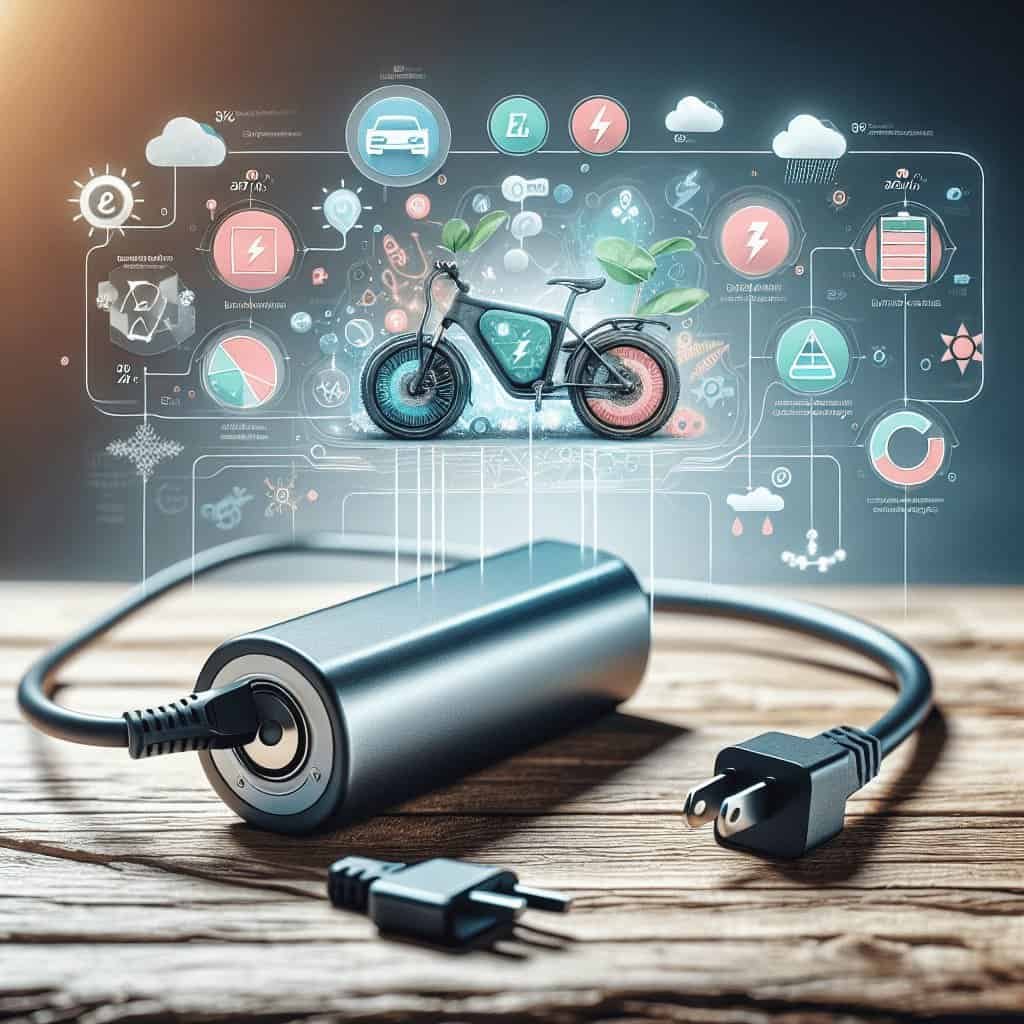So you’ve got yourself an electric bike and you’re loving the convenience and ease of riding it. But now you’re wondering, how often should you charge the battery to keep it in optimal condition? Well, let me break it down for you. Charging your electric bike battery regularly, preferably after every ride, is the key to prolonging its lifespan and ensuring maximum performance. However, it’s important not to overcharge it. With a little bit of attention and care, you can keep your electric bike battery in tip-top shape and enjoy countless smooth rides ahead.
Factors to Consider
When it comes to electric bike batteries, there are several important factors to consider to ensure you get the most out of your battery life. These factors can have a significant impact on how often you should charge your electric bike battery and how long it will last. Let’s explore these factors in more detail to help you make informed decisions about your electric bike usage.
Battery Type
The type of battery your electric bike uses plays a crucial role in determining its performance and charging frequency. There are three main types of batteries commonly used in electric bikes: lithium-ion (Li-ion) batteries, nickel-metal hydride (NiMH) batteries, and lead-acid (PbA) batteries. Each has its own characteristics and considerations.
Lithium-ion (Li-ion) Batteries
Li-ion batteries are the most common type of batteries used in electric bikes today. They are known for their high energy density, lightweight design, and long lifespan. Li-ion batteries are also less prone to self-discharge and have a higher charge retention rate compared to other battery types.
Nickel-metal Hydride (NiMH) Batteries
NiMH batteries are another popular choice for electric bikes. They offer a good balance between performance and cost-effectiveness. NiMH batteries have a higher energy density compared to lead-acid batteries, but they are less efficient than Li-ion batteries. Additionally, they are more prone to self-discharge and have a shorter lifespan compared to Li-ion batteries.
Lead-acid (PbA) Batteries
Lead-acid batteries are the oldest type of rechargeable batteries and are commonly used in electric bikes due to their low cost. While lead-acid batteries are heavier and less energy-dense than Li-ion or NiMH batteries, they are still a viable option for riders seeking more affordable alternatives. However, they require more frequent charging, have a shorter lifespan, and are less efficient overall.
Battery Capacity
Understanding the capacity of your electric bike battery is essential to gauge how often it needs to be charged. Battery capacity refers to the amount of energy a battery can store, usually measured in watt-hours (Wh). The higher the capacity, the longer your battery will last before requiring a recharge.
Factors such as the power draw of your electric bike motor, the terrain you ride on, and your riding style can affect battery capacity. It’s important to note that running your battery to low levels of charge frequently can reduce its capacity over time. Therefore, it’s recommended to charge your battery before it reaches a critically low level to maximize its lifespan.
Alongside battery capacity, it’s essential to consider the charger’s charging rate and efficiency. Using a charger that is specifically designed for your electric bike battery can optimize charging performance and help to prolong battery life.
Usage Frequency
Your usage frequency, or how often you use your electric bike, is another crucial factor in determining how frequently you should charge your battery. Generally, there are three main categories of electric bike riders: daily riders, weekend riders, and sporadic riders.
Daily Riders
Daily riders, as the name suggests, use their electric bikes on a daily basis, whether it’s for commuting to work, running errands, or simply enjoying leisurely rides. Since their electric bikes experience consistent usage, daily riders usually need to charge their batteries more frequently. Choosing a battery with a higher capacity and an efficient battery management system (BMS) is particularly important for daily riders.
Weekend Riders
Weekend riders use their electric bikes predominantly on the weekends for recreational purposes or short trips. Since their electric bikes are used less frequently, their batteries typically require fewer charges compared to daily riders. However, it’s still crucial for weekend riders to ensure their battery is adequately charged before each use to avoid any inconvenience while out riding.
Sporadic Riders
Sporadic riders are those who use their electric bikes occasionally or on an irregular basis. They might use their electric bikes for special occasions, long trips, or sporadic leisure rides. Sporadic riders may have longer intervals between charges, but it’s still important for them to keep their battery charged to ensure it’s ready for use whenever they decide to take their electric bike out for a ride.
Terrain and Riding Conditions
The terrain and riding conditions you encounter while using your electric bike can significantly impact battery life and the frequency of charging. Consider the following factors when assessing how often to charge your electric bike battery:
Flat Terrain
If you primarily ride on flat terrain, the demand on your battery will be less compared to those riding on hilly or uneven terrain. Flat terrain generally requires less power from the motor, allowing your battery to last longer. In such cases, you might not need to charge your battery as frequently.
Hilly Terrain
Riding on hilly terrain requires more power from your electric bike motor, putting additional strain on the battery. As a result, you may need to charge your battery more frequently compared to riding on flat terrain. Be mindful of the remaining battery capacity when tackling hills and plan your rides accordingly.
Off-road Conditions
Riding off-road can be exhilarating, but it can also be more demanding on your electric bike battery. Rough terrain, challenging trails, and uneven surfaces can put a strain on your battery, reducing its overall range. Depending on the intensity and duration of your off-road rides, you may need to charge your battery more frequently to ensure you have enough power for a smooth ride.
Extreme Weather Conditions
Extreme weather conditions, such as very high or low temperatures, can affect battery performance and overall lifespan. Extremely hot or cold temperatures can cause the battery to lose some of its capacity temporarily or permanently. In such cases, you might need to charge your battery more often or take additional precautions to protect it from extreme weather conditions.
Battery Management System (BMS)
A battery management system (BMS) is a vital component of your electric bike battery. It helps monitor and control various factors, such as voltage, temperature, and state of charge, to ensure optimal battery performance and safety. A well-designed BMS can help extend the lifespan of your battery by preventing overcharging, deep discharging, and excessive heat generation.
Importance of BMS
A BMS acts as a safeguard for your electric bike battery, preventing potential damage caused by improper charging or discharging. It helps maintain a healthy balance between individual battery cells and protects against overvoltage, undervoltage, and overcurrent conditions. Investing in an electric bike with a quality BMS can have a significant impact on the lifespan and performance of your battery.
Optimizing Battery Charging with BMS
A BMS can also optimize the charging process to maximize battery life. It can regulate the charging current and voltage, ensuring the battery is charged within safe and efficient parameters. Additionally, some BMS systems offer features like regenerative braking and smart charging algorithms, which further enhance battery performance and longevity.

Charging Frequency Recommendations
Now that we have covered the various factors that can influence battery charging frequency, let’s explore some practical recommendations for different rider types and battery types.
Daily Riders with Li-ion Batteries
For daily riders using Li-ion batteries, it’s generally recommended to charge your battery at least once a day to ensure it remains at an optimal state of charge. Charging your battery overnight or during periods when your electric bike is not in use can help maintain its performance and lifespan.
Daily Riders with NiMH Batteries
Daily riders using NiMH batteries may need to charge their battery once every two to three days, depending on their usage and the battery capacity. It’s important to avoid fully discharging the battery and instead charge it before it reaches a critically low level.
Daily Riders with PbA Batteries
Daily riders with PbA batteries typically need to charge their batteries on a daily basis since PbA batteries have a lower energy density and shorter overall lifespan. Charging your PbA battery overnight or whenever it is not in use is recommended to ensure you have enough power for your daily rides.
Weekend Riders with Li-ion Batteries
For weekend riders with Li-ion batteries, charging your battery once a week or before each weekend ride should be sufficient. However, be sure to monitor the battery’s state of charge and prioritize charging it before it reaches a critically low level.
Weekend Riders with NiMH Batteries
Weekend riders using NiMH batteries may need to charge their batteries once every two to three weeks, depending on their riding habits and the battery capacity. It’s important to keep an eye on the battery level and prioritize charging it before it becomes too depleted.
Weekend Riders with PbA Batteries
Weekend riders with PbA batteries may need to charge their batteries once every two weeks, depending on their usage and the battery capacity. It’s crucial to avoid fully discharging the battery and instead charge it before it reaches a critically low level.
Sporadic Riders with Li-ion Batteries
Sporadic riders using Li-ion batteries should charge their batteries before each ride or whenever they plan to use their electric bike. Since sporadic riders may have longer intervals between rides, it’s crucial to ensure the battery is adequately charged to avoid any inconvenience during a ride.
Sporadic Riders with NiMH Batteries
Sporadic riders using NiMH batteries should charge their batteries before each ride, similar to sporadic riders with Li-ion batteries. Maintaining a reasonable charge level ensures the battery is ready to go whenever you decide to take your electric bike out for a ride.
Sporadic Riders with PbA Batteries
Sporadic riders with PbA batteries should charge their batteries before each ride, just like sporadic riders with Li-ion and NiMH batteries. Although PbA batteries have a shorter overall lifespan, charging them before each ride can help optimize their performance and ensure you have enough power for your sporadic rides.

Tips to Maximize Battery Life
Aside from following the recommended charging frequencies, there are several additional tips to help maximize the life of your electric bike battery:
Avoid Deep Discharges
Deeply discharging your battery on a regular basis can significantly reduce its lifespan. Try to avoid draining your battery to critically low levels and aim to recharge it before it reaches the lower end of its capacity range.
Store Batteries Properly
When not using your electric bike for an extended period, be sure to store it in a cool, dry place. Extreme temperatures and high humidity can have a detrimental effect on battery performance and lifespan. It’s also important to maintain a reasonable charge level during storage to prevent self-discharge and voltage drop.
Regularly Maintain Your Electric Bike
Proper maintenance of your electric bike can go a long way in optimizing battery life. Keep your bike clean, check tire pressure regularly, and ensure all components are well-lubricated and in good working condition. Regular maintenance helps prevent unnecessary strain on the battery and motor, enhancing overall efficiency.
Avoid Overcharging
Overcharging your battery can lead to decreased battery performance and, in some cases, safety hazards. Always use a charger specifically designed for your electric bike battery and avoid leaving your battery connected to the charger for an extended period once it is fully charged.

Conclusion
When it comes to determining how often to charge your electric bike battery, several factors come into play. It’s crucial to consider the battery type, capacity, usage frequency, terrain, and riding conditions to make informed decisions about charging frequency. Additionally, investing in an electric bike with a high-quality battery management system (BMS) can help optimize battery performance and prolong its lifespan.
By understanding these factors and following the recommended charging frequencies, coupled with proper battery care and maintenance, you can ensure your electric bike battery lasts longer and provides a reliable power source for your rides. Remember to always prioritize safety and adhere to manufacturer’s guidelines when it comes to charging and maintaining your electric bike battery. Happy riding!


